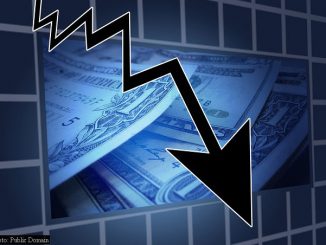The start of the FOMC’s November meeting is described in the minutes released yesterday as follows:
The meeting opened with a short discussion regarding communicating with the public about monetary policy deliberations and decisions. Meeting participants supported a review of the Committee’s communication guidelines with the aim of ensuring that the public is well informed about monetary policy issues while preserving the necessary confidentiality of policy discussions until their scheduled release. Governor Yellen agreed to chair a subcommittee to conduct such a review.
Here I provide some suggestions for Governor Yellen’s subcommittee to consider.
The Fed’s traditional policy tool is control of the overnight interest rate. But once the Fed brought this rate essentially down to zero at the end of 2008, the Fed’s main power has become irrelevant. According to economic theory, one of the most important ways in which the Fed might still be able to help the economy in such a setting is by successfully communicating today the strategy that it intends to follow in the future once it returns to targeting this rate at some value above zero.
It appeared for a while that the Fed had found a device for helping to frame such future expectations through its recently announced decision to resume large-scale purchases of longer-term U.S. Treasury securities. But as events have unfolded, it is becoming clear that political pressures will significantly constrain the Fed’s ability to exercise this option. Incoming Congressional leaders Paul Ryan (R-WI), Michael Pence (R-IN) and John Boehner (R-OH) are among those who have expressed strong opposition to the Fed’s plan. Not to be upstaged, Representative Dennis Kucinich (D-OH) plans to hold hearings next week on the Fed’s proposed $600 B purchase while the Democrats still call the shots in Washington.
The strength of this opposition may puzzle some within the FOMC. Traditionally, the Fed faced a trade-off between the goals of trying to keep both unemployment and inflation low. But at the moment, unemployment is painfully high by anybody’s standards, even as inflation is lower than the Fed feels is consistent with its goal of long-term price stability. Why is the Fed finding that persuading the public that inflation is too low is such a hard sell?
As Ben McCallum recently noted, regular Americans will tell you, of course inflation is still too high, because the price of X has gone up over the last year. Somehow the ability to process numbers that way fits naturally into our cerebral wiring, whereas averaging over all our purchases does not. There is also a deep-seated distrust of the official government measures of inflation. More fundamentally, many Americans think of inflation as an increase in the price of things they buy (which of course sounds bad), as opposed to an increase in the price of the things that they sell (which by itself is not that unpleasant). Perhaps the Fed should consider referring more to its desire to see wages and incomes growing more solidly, rather than its desire to see inflation higher.
Another key issue is that the public may not share the Fed’s vision that inflation and output are the only variables it should worry about. We have been going through financial and economic turmoil that is without precedent in the previous experience of most of those alive today. Who is to blame for what just happened? Many are taking the view that the Fed itself is to blame, arguing that excessively low interest rates fanned the flames of the housing bubble. Another popular perception is that the problem was created by reckless banks and financial institutions, which the Fed is committed to preserving from the consequences of their own actions, at the expense of regular citizens and taxpayers.
And what alternative to such stories has the Fed offered? The Fed’s operating principle seems to have been, “there’s a fire, we’ve got to put it out.” Now, I’m not going to argue with that as a decent principle. But it’s also worth asking, “how did the fire start?” And I don’t think it’s satisfactory to give as an answer, “stuff happens.”
My view is that there were multiple factors in the financial crisis, but that low interest rates from the Fed and inadequate regulatory oversight made a contribution. I think the Fed made some mistakes in both regards, and is making a further mistake today by not admitting those mistakes. The public needs more reassurance that we’re not just going to replay what happened during 2002-2005.
This leads to another area of communication in which I think the Fed could do better, which is communicating the limits of what monetary policy can be expected to accomplish. In part the public’s perception that the Fed caused the financial crisis in the first place is a response to a belief in the Fed’s omnipotence which Bernanke has done little to challenge. Indeed, even before the political maelstrom had pulled the rug out from under QE2, the earlier commodity price run-up had persuaded me that QE2 could not be pushed much farther. If we all understood that the game plan was, “here’s something that might help, but we’re not expecting miracles from it”, it’s one thing. But if the notion is we’re going to keep at it until unemployment is back to 7%, reasonable people should find that scary.
Here then is my suggested Fed communication strategy. The Fed should make clear that it is concerned about stagnating wages and income, that it has the tools to prevent a widespread deflation, and that it can and will prevent such a deflation. The Fed should also acknowledge that no policy it follows can reduce the unemployment rate to acceptable levels quickly, and that if the Fed were to attempt to do so on its own, it would create more problems than it solves.
And here’s my advice for how the Fed might approach the incoming congressional leaders:
Come now, let us reason together.
The Fed’s communication problem
Disclaimer: This page contains affiliate links. If you choose to make a purchase after clicking a link, we may receive a commission at no additional cost to you. Thank you for your support!





Leave a Reply